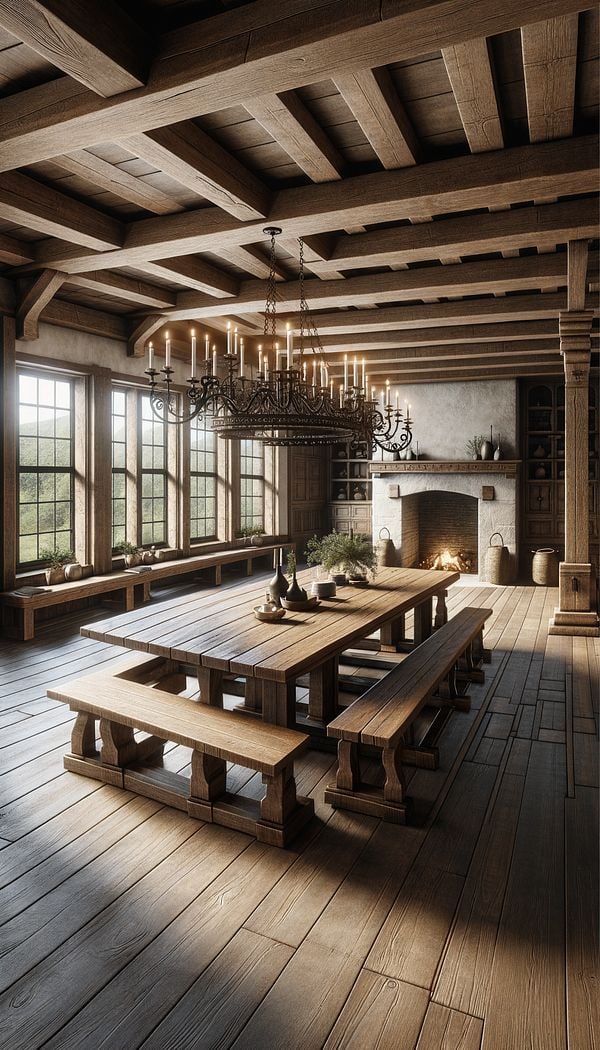What is Refectory Table?
A long, narrow table designed originally for dining in monasteries and later adopted for use in domestic interiors.
Description
A refectory table is a type of dining table characterized by its elongated shape and sturdy construction. The design of the refectory table has its roots in the dining halls of medieval monasteries, where it was used by monks during communal meals. These tables were typically made from solid wood, with thick legs often connected by a stretcher for added stability. The use of heavy, durable materials was not just for practicality but also reflected the table's communal and ceremonial importance within the monastery.
Over the centuries, the refectory table's strong, simple design made it a popular choice for domestic dining rooms, especially in homes favoring rustic or farmhouse design styles. The table's straightforward, functional aesthetic allows it to blend seamlessly with a variety of interior decor themes, from traditional to contemporary. Modern interpretations of the refectory table might integrate different materials and finishes, but they retain the original's hallmark features: solid construction and a long, narrow tabletop.
Beyond its use in dining rooms, the refectory table's versatile design also makes it a popular choice for workspaces, craft areas, and as a feature in large kitchens or open-plan living areas. It serves as a reminder of the importance of craftsmanship and the enduring appeal of functional, timeless furniture designs.
Usage
Originally designed for communal dining in monasteries, the refectory table is now commonly used in residential dining rooms, especially those with a rustic or farmhouse aesthetic. It is also adaptable for use in craft spaces or as a work table due to its sturdy construction and spacious surface area.
FAQs
-
What distinguishes a refectory table from other dining tables?
A refectory table is distinguished by its long, narrow shape, heavy construction, and the historical origin of its design in medieval monastic dining halls. It often features solid wood construction with thick, robust legs and a stretcher for added stability.
-
Can a refectory table fit in a modern interior design?
Yes, the refectory table's simple, functional design allows it to complement a wide range of interior decors, including modern and contemporary styles, especially when crafted with updated materials or finishes.
-
How should a refectory table be maintained?
Maintenance of a refectory table depends on its material but typically involves regular dusting and cleaning with a damp cloth. For wood tables, periodic application of a protective finish or oil may be necessary to preserve the wood's quality and appearance.
Practical Application
When incorporating a refectory table into your home, consider the size of the room and the table's scale to ensure it complements the space without overwhelming it. Additionally, pairing the table with suitable chairs or benches that match its rustic charm and solid construction can enhance its aesthetic appeal and functionality. For a modern twist, consider a refectory table with a lighter finish or innovative materials.
-
CommodeA commode is a type of cabinet or chest of drawers, often used for storing clothing or personal items.
-
Kitchen IslandA kitchen island is a freestanding piece of cabinetry that is placed in a kitchen to provide additional countertop space, storage, and sometimes seating.
-
French ClassicFrench Classic refers to an interior design style originating from France, characterized by its elegance, opulence, and emphasis on symmetry and proportion.
-
GraniteGranite is a hard, granular, igneous rock primarily composed of quartz, mica, and feldspar.
-
GildingGilding is the application of a thin layer of gold or gold-like material to a surface.
